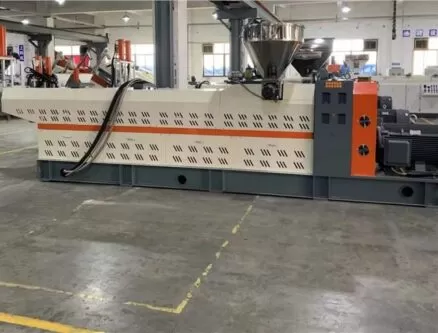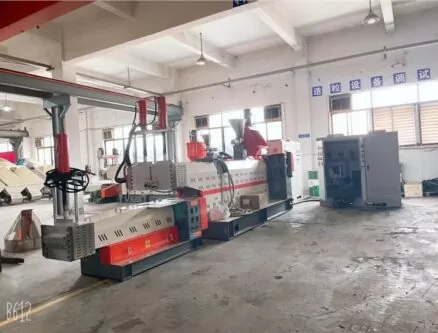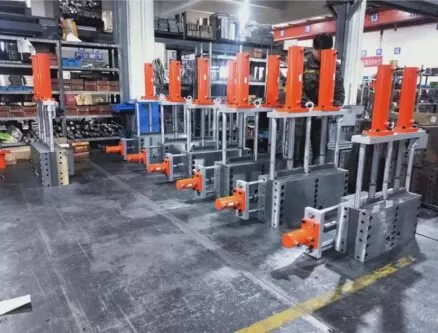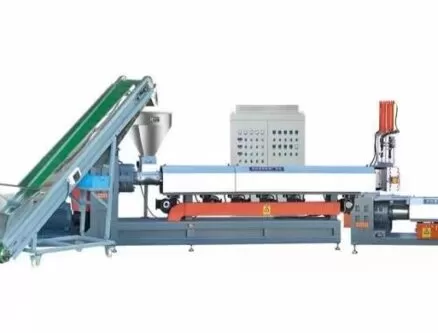Plastic waste is piling up faster than we can say “eco-disaster.” Landfills are bursting. Oceans are choking. And manufacturers are begging for recycled material that actually works. It sounds like chaos—but it’s also an opportunity. I’ve been neck-deep in this world for years, and let me tell you: turning plastic into pellets isn’t just a process. It’s a revolution.
You turn plastic into pellets by shredding it, cleaning it, melting it down, and pushing it through a pelletizer. The result? Small, uniform plastic nuggets ready to be reused in manufacturing.
Simple on paper. Complex in practice. And honestly? That’s where the fun begins.

What kind of plastic can be turned into pellets?
Let’s get this out of the way first: not all plastics are created equal. Some play nice in the pellet game. Others? Total divas.
We usually work with thermoplastics—think polyethylene (PE), polypropylene (PP), polystyrene (PS), and polyethylene terephthalate (PET). These are plastics that can be melted and reformed without losing their properties. That’s the golden rule.
Want the data? Around 90% of post-consumer plastic waste suitable for pelletizing falls under these categories.
Harder plastics like polycarbonate or PVC? Possible, but trickier. Especially when additives are involved. My advice? Know your plastic types like you know your passwords.
What’s the first step—collection and sorting?
Exactly. You can’t pelletize chaos.
First, we collect and sort the plastic waste, often by resin code or density. Manual sorting works, but optical sorters and AI-assisted systems are the real MVPs in large-scale operations.
In our factory at Amige, we’ve seen sorting accuracy increase by 25% after switching to sensor-based systems.
Clean streams equal quality pellets. Dirty inputs? That’s a headache waiting to happen.

How do you clean plastic before pelletizing?
Cleaning is not optional—trust me. Dirty plastic ruins equipment and downgrades pellet quality.
We usually go through a hot wash, friction wash, and rinsing process. Labels, oils, food residues—everything must go. Sometimes, we even throw in chemical detergents for those extra stubborn contaminants.
And the water? We don’t waste it. We recycle 80% of the wash water in our closed-loop system. Good for the planet, better for our utility bill.
How does the plastic get melted?
Once clean, the shredded plastic heads into the extruder—aka the plastic oven of dreams.
The extruder heats the plastic to its melting point, turning it into a gooey, glorious flow of molten resin. Different plastics melt at different temperatures. PET wants 250°C. PE prefers 130°C. It’s a delicate dance.
We keep tight control over this. A few degrees too hot? Burnt polymer. Too cold? Inconsistent flow. And nothing ruins my day faster than inconsistent flow.
When do the pellets actually get made?
Ah, the main event: pelletizing.
Molten plastic exits the extruder through a die—think spaghetti maker, but make it industrial. These strands are then cut into small pellets by rotating blades in an underwater or air-cooled system.
We usually aim for 3mm pellets, nice and uniform. Why? Because manufacturers are picky. Consistent pellets feed better into molding and extrusion machines.
A good pelletizer can pump out up to 1,000 kg per hour, depending on the setup.

What happens after pelletizing?
Time for the cool-down.
We send the fresh pellets through a water bath or air conveyor to cool them, then dry them thoroughly. Moist pellets? Bad news for storage and reprocessing.
Next comes screening. We remove oversized or undersized bits to maintain quality standards. Some batches get additives or colorants mixed in, depending on customer needs.
Finally, we bag, label, and ship. These little guys are now ready to live again—as new bottles, containers, fibers, or even car parts.
What equipment do you need?
Let’s talk hardware. Here’s the usual lineup for a pelletizing line:
Shredder or crusher
Washer (hot and friction types)
Dryer
Extruder
Pelletizer
Silo or bagging system
At Amige, we custom-build these machines. And we’ve tested them on everything from rigid HDPE drums to soft LDPE films. The key? Modular design. Easy to maintain. Easy to scale.
One of our mid-sized lines can handle 500kg/hour with just three operators. Not bad, right?

Can this process handle colored or mixed plastics?
Short answer: yes—but with caveats.
Colored plastics are no problem if the customer is okay with the outcome. Mixed-color feedstock usually ends up as black pellets, which limits their use in aesthetic products.
Mixed resin types, on the other hand, are trickier. Blending incompatible plastics can cause structural issues in the final pellet. That’s why sorting is crucial.
Still, we’ve helped clients develop hybrid blends for low-end applications like pallets and crates. Not pretty, but effective.
What are the main challenges?
Oh, where do I begin?
Contamination: Organic waste, PVC, and metals can all mess up the process.
Moisture: Especially with hygroscopic plastics like PET.
Energy consumption: Pelletizing takes power. Efficient motors help.
Consistency: Keeping size and melt flow index uniform is an art.
The good news? Each challenge has a fix. We’ve spent years fine-tuning our processes to handle the unpredictable nature of waste plastic.
Is it worth it economically?
Absolutely—if done right.
Recycled pellets can cost 30–50% less than virgin plastic, depending on market trends. That’s major savings for manufacturers.
Plus, with ESG regulations tightening globally, using recycled content isn’t just smart—it’s becoming mandatory.
The demand is real. The margins are real. And the environmental impact? That’s the cherry on top.
Can small businesses get into this?
Yes, and many are doing just that.
We’ve helped small recyclers set up compact pelletizing lines that process 100–200 kg/hour. With the right training and sourcing strategy, it’s totally doable.
Start small. Learn fast. Expand as demand grows. You don’t need a factory the size of a football field to get into pellet production.
What you do need? Passion. Process. And a good pelletizer (yes, shameless plug).
Conclusion
Turning plastic into pellets is more than recycling—it’s reshaping the industry. And with the right tools and mindset, anyone can be part of this transformation.
